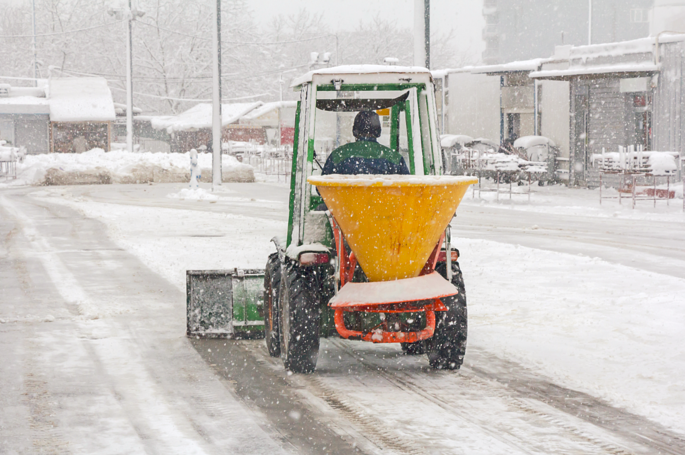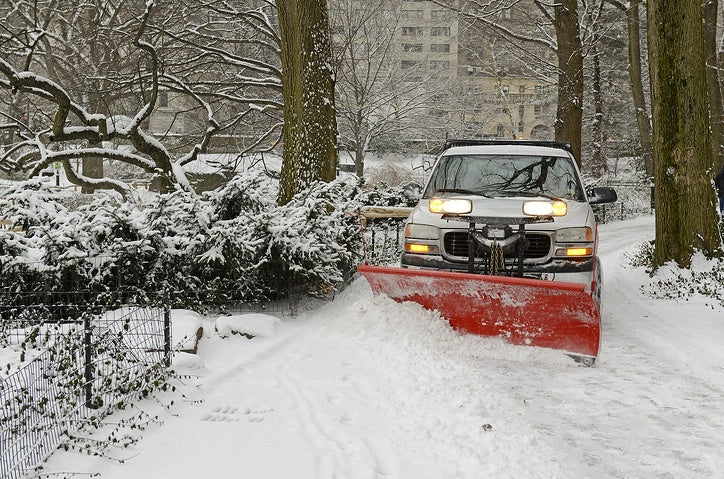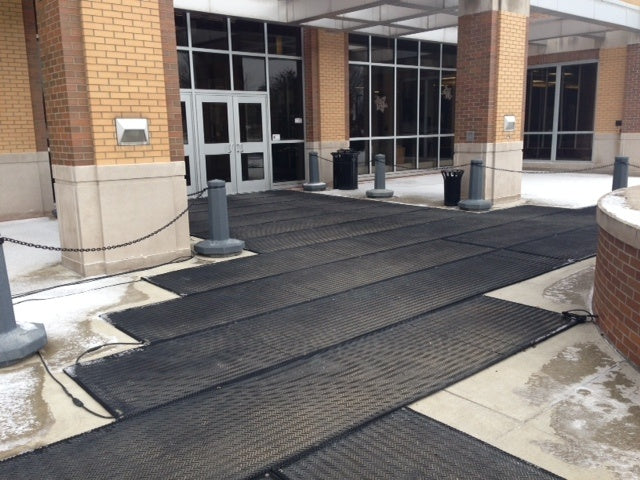
The last few winters have brought ever fluctuating levels of snowfall, and with that comes the ever increasing cost of snow removal. There are many factors that can determine these costs for large facilities, lots, and campuses. If you’re the manager of an office building, school campus, plaza, or hospital, here’s a quick rundown of what to consider for the winter.
Size and Layout of your Space
Well before the cold weather arrives, you should assess your facility space or lot alongside a snow removal contractor to ascertain any special challenges or obstacles that the job will entail. How big is your lot? Are there speed bumps or executive parking lots that need to be plowed around? Are there multiple lots on the property, and are they connected? Are there any handicapped ramps that require special attention?
All of these questions can affect your snow removal costs, and all can be determined by taking measurements, and discussing any perceived complications with a snow removal expert. This also will give you a chance to compare vendor costs, and ensure that you’re getting the necessary services for your facility.
As a senior member of PlowSite.com, the Snow Plowing & Ice Management Forum, said, “You need to be conscious of how sections connect and overlap. A good driver will have a plan of attack that will allow him to complete the section he is plowing in the least amount of time.” You can ensure that such factors are considered by assessing your property today.
Supply and Demand
As has been demonstrated over the last couple of years, supply and demand plays a large part in any region’s snow removal cost; as snowfall rates increase, and more people in a given area require the supplies or contractors necessary to tackle large snow banks, those very supplies and contractors will cost a lot more.
Every year, snow-covered side streets turn to slush and ice as snow plows and contractors are called to more pressing areas like highways and industrial zones. Don’t let your facility become a casualty of a limited number of snow plows or snow blowers—stock up on equipment in advance.
But it’s not just plows that disappear quickly. A severe rock salt shortage in Winter 2013-2014 led to a diminished supply from the moment that Winter 2014-2015 began. Not only were some counties left without the required amount of salt they needed, but prices were driven up across the country as this in-demand deicing tool became scarce.
While the biggest factor determining salt consumption—ie how much snow will fall—remains unknown, you can still prepare for this cost by negotiating your salt contracts early, and ensuring that your facility doesn’t have to scramble should another shortage hit. Further, by agreeing on a cost in the summer, you’re sure to pay a fair price no matter how heavy the snow hits.
Contract Details and Guidelines
Negotiating your snow removal contract, specifically the labor and usage costs, will play a big part in determining your winter costs. For example, does your facility have to be cleared continuously, even after an arbitrary amount of snow? Or can it be cleared just once, after the snow stops falling? Can snow be piled and stored in the parking lot, or does it have to be hauled away by the contractor?
You also need to decide if it behooves your facility to pay a fixed price contract—which covers snow plow costs for an entire season—or if you pay per inch of snow. If your region is known for getting a lot of snow every year, or if early weather predictions are saying that you’re in for a long winter, a fixed price contract might be best.
In short, snow removal for large facilities is a costly matter, unless you’re one of the increasingly few regions that simply doesn’t get a lot of snow. Everywhere else, it's going to cost a significant chunk of change. You therefore might want to start outlining your snow removal budget early, in order to best consider any factor you might face in the impending winter, and prepare your facility and property accordingly. You can also avoid the possibility that supplies might run short by pursuing alternative snow removal options.


